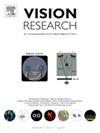人类双目视觉的发展:电生理学的视角
IF 1.4
4区 心理学
Q4 NEUROSCIENCES
引用次数: 0
摘要
两只眼睛的视觉在视野、双眼汇总以及从视差和运动中获得的深度感方面具有进化优势。本文综述了目前在视觉诱发电位(VEPs)透镜下双目视觉发展的研究进展。本综述从比较单眼和双眼VEP振幅比的双目汇总的早期研究开始。这是随后的描述双眼相互作用的更明确的指标提供的研究双眼掩蔽和互调。然后,我们描述了双眼运动加工的显著不成熟-发育运动不对称-单眼向鼻/颞方向运动加工的不对称,反映了儿童正常双眼相互作用的发展史。最后,我们回顾了对深度水平视网膜视差的主要线索的敏感性的发展。总之,现有的研究结果在某些方面描绘了一幅早期能力的图景,并结合了与成人的数量和重要的质量差异,这些差异表明,在不同的发育序列中存在着不同的加工机制。本文章由计算机程序翻译,如有差异,请以英文原文为准。
Development of human binocular vision: An electrophysiological perspective
Vision with two eyes confers evolutionary advantages in terms of field of view, binocular summation and the sense of depth from disparity and motion. This review summarizes our current knowledge of the development of binocular vision through the lens of Visual Evoked Potentials (VEPs). The review begins with early studies of binocular summation that compared monocular to binocular VEP amplitude ratios. This is followed by a description of more definitive indices of binocular interaction afforded by studies of dichoptic masking and intermodulation. We then describe a striking immaturity of binocular motion processing – the developmental motion asymmetry – a monocular nasalward/temporalward asymmetry of motion processing that reflects the child’s developmental history of normal binocular interaction. We end with a review of the development of sensitivity to the primary cue for depth – horizontal retinal disparity. Together, the available results paint a picture of early competency in some respects, combined with both quantitative and important qualitative differences from the adult that suggest the presence of distinct processing mechanisms with different developmental sequences.
求助全文
通过发布文献求助,成功后即可免费获取论文全文。
去求助
来源期刊

Vision Research
医学-神经科学
CiteScore
3.70
自引率
16.70%
发文量
111
审稿时长
66 days
期刊介绍:
Vision Research is a journal devoted to the functional aspects of human, vertebrate and invertebrate vision and publishes experimental and observational studies, reviews, and theoretical and computational analyses. Vision Research also publishes clinical studies relevant to normal visual function and basic research relevant to visual dysfunction or its clinical investigation. Functional aspects of vision is interpreted broadly, ranging from molecular and cellular function to perception and behavior. Detailed descriptions are encouraged but enough introductory background should be included for non-specialists. Theoretical and computational papers should give a sense of order to the facts or point to new verifiable observations. Papers dealing with questions in the history of vision science should stress the development of ideas in the field.
 求助内容:
求助内容: 应助结果提醒方式:
应助结果提醒方式:


